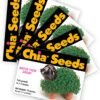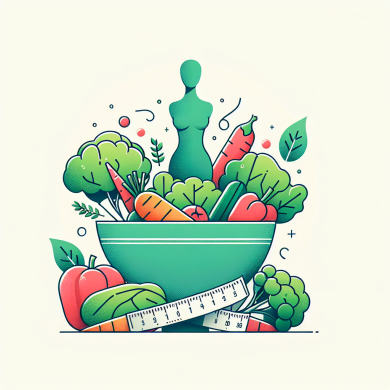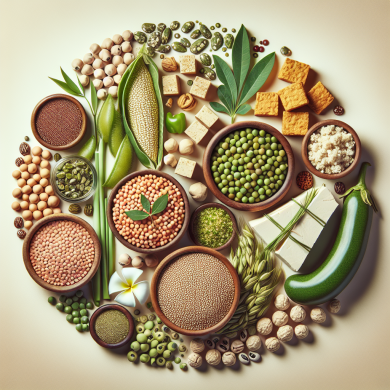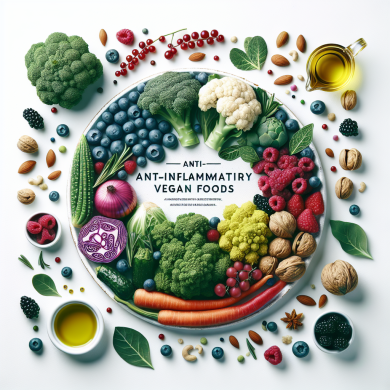Innovative Vegan Meal Prep Ideas Unveiled
Introduction to Vegan Meal Prep
The vegan lifestyle has surged in popularity over the past decade, driven by increased awareness of health benefits, environmental sustainability, and ethical considerations. Despite the growing interest, one of the primary challenges faced by both new and seasoned vegans is ensuring variety and nutrition in their meals. Meal prep, a strategy involving the preparation of meals ahead of time, has emerged as a powerful tool to address these challenges. This article unveils innovative vegan meal prep ideas that promise to keep your diet exciting, nutritious, and sustainable.
The Fundamentals of Vegan Meal Prep
Before delving into creative meal prep ideas, it is essential to understand the basics of vegan meal preparation. The key is to focus on whole, plant-based foods that provide a balanced mix of macronutrients and essential vitamins and minerals.
Macronutrients
– **Proteins:** Incorporate a variety of protein sources such as lentils, beans, tofu, tempeh, quinoa, and edamame.
– **Carbohydrates:** Opt for complex carbohydrates like brown rice, sweet potatoes, whole grains, and oats.
– **Fats:** Include healthy fats from sources like avocados, nuts, seeds, and olive oil.
Micronutrients
Ensure a wide range of vitamins and minerals by consuming diverse fruits, vegetables, and fortified foods.
Meal Prep Techniques
– **Batch Cooking:** Prepare large quantities of staple ingredients such as grains, legumes, and roasted vegetables to use throughout the week.
– **Freezing:** Utilize your freezer to store soups, stews, and smoothies, extending their shelf life.
– **Mix and Match:** Plan meals that allow for easy swapping of components to create different dishes.
Innovative Vegan Meal Prep Ideas
Rainbow Buddha Bowls
A rainbow Buddha bowl is a feast for the eyes and the palate. Start with a base of mixed greens or grains, add a variety of colorful vegetables, and top with a plant-based protein source. For instance, combine quinoa with roasted sweet potatoes, red cabbage, cherry tomatoes, and steamed broccoli. Top it off with crispy chickpeas and a tangy tahini dressing.
Mason Jar Salads
Mason jar salads are perfect for on-the-go meals. Layer your ingredients starting with the dressing at the bottom to keep the greens fresh. For a vegan version, try a lemon-tahini dressing, followed by chickpeas, cucumbers, bell peppers, cherry tomatoes, and leafy greens. Seal the jar tightly, and when it’s time to eat, simply shake and enjoy.
Stuffed Bell Peppers
Stuffed bell peppers are not only visually appealing but also incredibly versatile. Fill them with a mixture of quinoa, black beans, corn, and diced tomatoes. Add spices like cumin and chili powder for a Mexican twist. Bake until the peppers are tender, and garnish with avocado slices and fresh cilantro.
Overnight Oats
Overnight oats are a quick and nutritious breakfast option. Combine rolled oats with almond milk, chia seeds, and a natural sweetener. Add layers of fruit such as berries or bananas and let them soak overnight in the refrigerator. In the morning, top with nuts or a dollop of almond butter for added crunch.
Cauliflower Rice Stir-Fry
Replace traditional rice with cauliflower rice for a low-carb alternative. Sauté with an assortment of vegetables such as bell peppers, green peas, and carrots. Add marinated tofu cubes and a splash of soy sauce or coconut aminos for flavor. This dish is quick to prepare and can be customized with your favorite vegetables.
Advanced Meal Prep Strategies
Utilizing Seasonal Produce
Incorporate seasonal produce into your meal prep to enhance flavor and nutritional value. Seasonal fruits and vegetables are often more affordable and environmentally friendly. In the summer, focus on incorporating zucchinis, tomatoes, and berries, while in the winter, root vegetables and citrus fruits shine.
Experimenting with Global Cuisines
Expand your culinary horizons by experimenting with global cuisines. Try creating a vegan version of Indian-inspired chickpea curry or a Thai-inspired coconut and vegetable stir-fry. These dishes often incorporate a variety of spices and herbs, adding depth and complexity to your meals.
Incorporating Fermented Foods
Fermented foods like kimchi, sauerkraut, and tempeh not only add a unique flavor but also offer probiotics that promote gut health. Incorporate these foods into your meal prep by adding them to salads, bowls, or as a side dish.
Tips for Successful Vegan Meal Prep
Plan Ahead
Take time each week to plan your meals and make a shopping list. Consider your schedule and choose recipes that fit your time constraints and nutritional goals.
Invest in Quality Containers
Invest in a variety of quality containers to store your prepped meals. Glass containers are ideal as they are durable, microwave-safe, and don’t retain odors.
Stay Flexible
While meal prep aims to save time, it’s important to remain flexible. Be open to adjusting ingredients based on availability and personal preference.
Conclusion
Innovative vegan meal prep is about more than just saving time; it’s about creating a sustainable, nutritious, and enjoyable dietary lifestyle. With the ideas and strategies outlined in this article, you can embrace the endless possibilities of plant-based eating. Whether you are a long-time vegan or just beginning your journey, these meal prep ideas offer a delicious and inventive approach to fueling your body with the best that nature has to offer.















Add comment